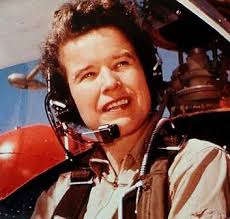During Women's History Month, HFES is Proud to Celebrate the Life of Dr. Dora Dougherty Strother
Posted March 29, 2022
In celebration of Women’s History month, I would like to honor Dr. Dora Dougherty Strother (a.k.a. Dr. Dora Dougherty McKeown). Also recognized by Frank Durso in 2014 as the first female fellow of HFES (see Whirly-Girl). Dora Dougherty Strother was also a significant figure in women’s history.
Throughout her life she contributed to our country and our discipline in many ways. Her passion was aviation. She impacted aviation in many capacities: as a pilot, a test pilot, a military pilot, an instructor, a trainer, and a cockpit designer. In the latter capacity at Bell Helicopter as Chief of Human Factors Engineering and Cockpit Arrangement, she drew attention to the new field of human factors engineering and was a founding member of our society.
 She was interested in all-things aviation as a young child. Strother jumped at the opportunity to earn a pilot’s certificate through the Civilian Pilot Training Program in the summer of 1940. That program existed to build up the pool of pilots in the country. It was especially needed (though secretly so) for wartime and ten percent of the trainees were allowed to be women. After training, Strother also took time to strengthen her piloting skills on her own and in 1943 joined the third class of 55 Woman Air Force Service Pilots (WASPS) and went on to train on ferrying aircraft and towing targets in the air for ground crew training. She and another WASP, Dorothea Johnson Moorman, flew the B-29 Superfortress as a demonstration that the bomber was so safe that even women could fly it. She went on to train male WWII pilots on this aircraft. The WASP program was unceremoniously disbanded in 1944 without recognition of the military service of these women.
She was interested in all-things aviation as a young child. Strother jumped at the opportunity to earn a pilot’s certificate through the Civilian Pilot Training Program in the summer of 1940. That program existed to build up the pool of pilots in the country. It was especially needed (though secretly so) for wartime and ten percent of the trainees were allowed to be women. After training, Strother also took time to strengthen her piloting skills on her own and in 1943 joined the third class of 55 Woman Air Force Service Pilots (WASPS) and went on to train on ferrying aircraft and towing targets in the air for ground crew training. She and another WASP, Dorothea Johnson Moorman, flew the B-29 Superfortress as a demonstration that the bomber was so safe that even women could fly it. She went on to train male WWII pilots on this aircraft. The WASP program was unceremoniously disbanded in 1944 without recognition of the military service of these women.
Strother went on to get an MS in applied psychology and a PhD in aviation education at New York University in 1955 and taught at the University of Illinois. Some of her publications in the early seventies related to human factors issues with V/STOL (vertical and/or short take-off and landing), however most of her writing was about the WASPs.
In addition to her service as a WASP, she served her profession and country later in her life. After her Bell Helicopter career and record-breaking rotorcraft feats, she also became involved in the US Army Science Board, the Human Factors Society, and the Air Force Reserve, retiring as a Lt. Col.
Strother broke through multiple glass ceilings as a woman aviator in the military, but her greatest contribution to women was in her testimony to congress to provide Veteran’s status for the WASPs. This was achieved in 1977. Strother died in 2013 and due to her now-attained Veteran’s status is buried in Arlington National Cemetery, a fitting resting place for a woman who tirelessly served her country.
By Nancy J. Cooke
Author Note: I did not know Dora Dougherty Strother, but drew from Frank Durso’s article, Wikipedia, and an article by Negar Tekeei for the Northwestern Magazine. I also rented an interesting documentary from Amazon Prime: Silver Wings, Flying Dreams: The Complete Story of the Women Airforce Service Pilots. I highly recommend it.
Learn more: